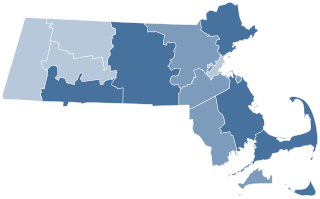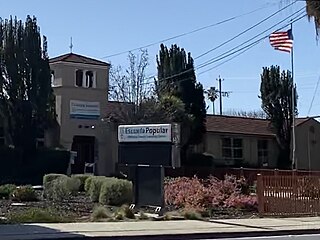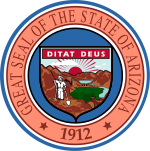In bilingual education, students are taught in two languages. It is distinct from learning a second language as a subject because both languages are used for instruction in different content areas like math, science, and history. The time spent in each language depends on the model. For example, some models focus on providing education in both languages throughout a student's entire education while others gradually transition to education in only one language. The ultimate goal of bilingual education is fluency and literacy in both languages through a variety of strategies such as translanguaging and recasting.

Language immersion, or simply immersion, is a technique used in bilingual language education in which two languages are used for instruction in a variety of topics, including maths, science, or social studies. The languages used for instruction are referred to as the L1 and the L2 for each student, with L1 being the student's native language and L2 being the second language to be acquired through immersion programs and techniques. There are different types of language immersion that depend on the age of the students, the classtime spent in L2, the subjects that are taught, and the level of participation by the speakers of L1.
The National Association for Bilingual Education (NABE) is a non-profit organization founded in 1975 in the United States. NABE advocates for the development and implementation of bilingual education programs, aiming to address the educational needs of students who speak a language other than English at home. The organization emphasizes academic programs that support English proficiency while maintaining respect for linguistic and cultural diversity.

The Elementary and Secondary Education Act (ESEA) was passed by the 89th United States Congress and signed into law by President Lyndon B. Johnson on April 11, 1965. Part of Johnson's "War on Poverty", the act has been one of the most far-reaching laws affecting education passed by the United States Congress, and was reauthorized by the No Child Left Behind Act of 2001.
Transitional bilingual education is an approach to bilingual education in which students first acquire fluency in their native language before acquiring fluency in the second language, where fluency is defined as linguistic fluency as well as literacy. This is in contrast to total immersion bilingual education in which students are directly immersed in the second language. Transitional bilingual education is among those most commonly implemented in public schools across the United States. The application of transitional bilingual education in the United States ultimately resulted from an effort to officially recognize Chicano and Latino identities with the passage of the Bilingual Education Act.

French immersion is a form of bilingual education in which students who do not speak French as a first language will receive instruction in French. In most French-immersion schools, students will learn to speak French and learn most subjects such as history, music, geography, art, physical education and science in French.

The Bilingual Education Act (BEA), also known as the Title VII of the Elementary and Secondary Education Amendments of 1967, was the first United States federal legislation that recognized the needs of limited English speaking ability (LESA) students. The BEA was introduced in 1967 by Texas senator Ralph Yarborough and was both approved by the 90th United States Congress and signed by President Lyndon B. Johnson on January 2, 1968. While some states, such as California and Texas, and numerous local school districts around the country already had policies and programs designed to meet the special educational needs of elementary and secondary school students not fluent in the English language, this act signaled that the federal government now also recognized the need for and value of bilingual education programs in U.S. public education. In 1969 there was a 50% drop out rate among Mexican American students who struggled to keep up with their English-speaking peers in school; Representative Tony Abril argued that the Bilingual Education Act would reduce this number. Passed on the heels of the Civil Rights Movement, its purpose was to provide school districts with federal funds, in the form of competitive grants, to establish innovative educational programs for students with limited English speaking ability.

Ronald Keeva Unz is an American technology entrepreneur, political activist, writer, and publisher. A former businessman, Unz became a financial software multi-millionaire before entering politics. He unsuccessfully ran for governor as a Republican in the 1994 California gubernatorial election and for U.S. Senator in 2016. He has sponsored multiple ballot propositions promoting structured English immersion education as well as campaign finance reform and minimum wage increases.
English-language learner is a term used in some English-speaking countries such as the United States and Canada to describe a person who is learning the English language and has a native language that is not English. Some educational advocates, especially in the United States, classify these students as non-native English speakers or emergent bilinguals. Various other terms are also used to refer to students who are not proficient in English, such as English as a second language (ESL), English as an additional language (EAL), limited English proficient (LEP), culturally and linguistically diverse (CLD), non-native English speaker, bilingual students, heritage language, emergent bilingual, and language-minority students. The legal term that is used in federal legislation is 'limited English proficient'.
Dual language is a form of education in which students are taught literacy and content in two languages. Most dual language programs in the United States teach in English and Spanish, but programs increasingly use a partner language other than Spanish, such as Arabic, Chinese, French, Hawaiian, Japanese, or Korean. Dual language programs use the partner language for at least half of the instructional day in the elementary years.
The English Language Acquisition, Language Enhancement, and Academic Achievement Act - formerly known as the Bilingual Education Act - is a federal grant program described in Title III Part A of the federal Elementary and Secondary Education Act (ESEA), which was reauthorized as the No Child Left Behind Act in 2002 and again as the Every Student Succeeds Act in 2015. This section is specifically targeted to benefit Limited English Proficient (LEP) children and immigrant youth. The statute states that LEP students must not only attain English proficiency but simultaneously meet the same academic standards as their English-speaking peers in all content areas. Federal funding is provided to assist State Education Agencies (SEAs) and Local Education Agencies (LEAs) in meeting these requirements. In 2011, ESEA Title III awards were granted to 56 SEAs and the average award given to an individual SEA was $12,158,046.

Proposition 227 was a California ballot proposition passed on the June 2, 1998, ballot. Proposition 227 was repealed by Proposition 58 on November 8, 2016.
Structured English Immersion (SEI) is a total immersion bilingual education technique for rapidly teaching English to English language learners. The term was coined by Keith Baker and Adriana de Kanter in a 1983 recommendation to schools to make use of Canada's successful French immersion programs. The Canadian model was developed to encourage bilingualism through immersing Anglophones in the minority language and replaced many English-only laws in various Canadian provinces before the 1960s, while in the United States the same approach was advocated to force minority speakers to adopt English.
Heritage language learning, or heritage language acquisition, is the act of learning a heritage language from an ethnolinguistic group that traditionally speaks the language, or from those whose family historically spoke the language. According to a commonly accepted definition by Valdés, heritage languages are generally minority languages in society and are typically learned at home during childhood. When a heritage language learner grows up in an environment with a dominant language that is different from their heritage language, the learner appears to be more competent in the dominant language and often feels more comfortable speaking in that language. "Heritage language" may also be referred to as "community language", "home language", and "ancestral language".

The Massachusetts English Language Education in Public Schools Initiative, Question 2 was a successful initiative voted on in the Massachusetts general election held on November 5, 2002. It was one of three 2002 ballot measures put to public vote, and the only one to pass.

Jeff MacSwan is an American linguist and educational researcher, working in the United States. He is currently Professor of Applied Linguistics and Language Education in the Division of Language, Literacy, and Social Inquiry in the Department of Teaching and Learning, Policy and Leadership at the University of Maryland. He is also Professor in the Neuroscience and Cognitive Science Program there, and Affiliate Professor in the University of Maryland Linguistics Department and Center for the Advanced Study of Language. He is a Fellow of the American Educational Research Association (AERA) and of the National Education Policy Center (NEPC).
English immersion programs have students to be fully immersed in the American culture, which starts by learning its language — English. A number of those who enroll into English immersion programs are immigrant children. Due to the fact that more ambitious choices are made by immigrant students than nonimmigrant students regarding academic choices, secondary effects, such as these English immersion programs, create positive outcomes. Immigrant children is defined as children who have at least one foreign born parent. Some immigrant students show proficiency in English after being in the program for only 2–3 years while others take longer. There are not many other resources provided by schools that students can go to if they want to learn or improve their English. As a result, it can possibly affect immigrant students' proficiency in English.

Spanish bilingual education in California is the incorporation of the Spanish and English language to teach various subjects in primary education. Proposition 227 affected Spanish bilingual programs negatively by mandating that instruction be conducted "overwhelmingly in English." Although there was no direct statement in this proposition prohibiting the use of Spanish for instruction, many teachers and districts stopped teaching in the Spanish language because they were pressured to focus on English-only curriculum. However, there continue to be dual language bilingual programs in the state.

Proposition 58 is a California ballot proposition that passed on the November 8, 2016 ballot. Proposition 58 repealed bilingual education restrictions enacted by Proposition 227 in 1998.
In bilingual education, students are taught content areas like math, science, and history in two languages. Numerous countries or regions have implemented different forms of bilingual education.









